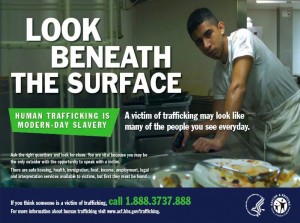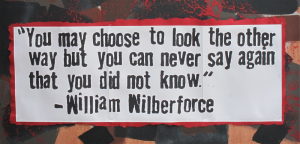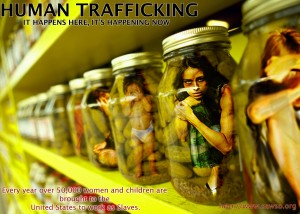By Joshua D. Payne ’18
International black-markets are the medium for transfer of many different types of goods and services. The variance in these commodities and the methods of their acquisition, distribution, and sale are just as diverse. Two examples of this would be the differences in the trade in “bodies” and in body parts. Though the trade and sale of bodies and body parts may seem similar the way they are handled through the market are for the most part quite different, from the way that they are moved, sold, and controlled, but there is one major step in which these two illegal marketplaces converge and that is in their sourcing.
The so-called trade in bodies is really a term that encompasses many different forms of human trafficking. Whether it be the smuggling of illegal immigrants in and out of countries, exploitation of sex workers, or forced labor these are all different forms of this illicit trade. The main convergence between the trade of bodies and body parts are in the way that their respective suppliers source them. The stories of those who have been trafficked are plentiful and more often than not, recounts of nightmares in the victims lives the abduction and coercion of these individuals is extensive and abundant. Graphic Journalist Dan Archer has set out in an attempt to stop this trade through his artistic talents to bring and attention to the problem in the hopes of creating change. Through his novel Borderland: Seven Stories as Told by Victims of Human Trafficking, Archer recounts seven different experiences that he combined from many different accounts from victims. These stories show multiple different ways that traffickers use to trick and coerce their victims. Though Archer does a good job showing the variance in the backgrounds of victims breaking the stereotype that all those who are trafficked are small, weak, and powerless with stories of educated and strong individuals. Individuals who are often down on their luck, in need of work and will jump at any opportunity at a better life, this hardship makes it easy for traffickers to make these poor souls into their victims. Dangling stories of opportunity and prosperity in front of them and all that they must do is come with them and before they know it their lives are forever changed.
However the sourcing and acquisition of body parts is quite different, with a common convergent thread, preying on the weak. Unfortunately the term, “donor organs” is the primary one used but in reality not every “donation” is done voluntarily. There is the process of voluntarily giving an organ to a loved one like a kidney, or being a organ donor, but these are not the only ways used. The high demand for organs like hearts, lungs, livers, kidneys, have created a huge surplus in demand from first world countries without enough demand to satisfy it and because modern science has yet to produce such organs artificially, the incentive has been created to source these organs by other methods. Researchers have found trends of those from western and first world countries having organs forcibly “sourced” from individuals in less developed countries in South America, Asia, and Eastern Europe, “Residents of the shantytown Alto do Cruzeiro in Northeast Brazil, reported sightings of large blue and yellow vans driven by Americans, sometimes by Japanese agents, who were said to be scouring poor neighborhoods in search of stray youngsters. The children would be nabbed and shoved into the back of the van. Later their discarded bodies, minus heart, lungs, liver, kidneys, and eyes, would turn up by the side of the roads, in between rows of sugarcane, or in hospital dumpsters (Scheper-Hughes).” These horror stories are being told around the world, of the strong taking advantage of the weak and the marginalized in society and yet little has been done to curb the problem. And the problems are not just in Brazil or other third world countries, “Paolo Toscelli wrote a series of articles about rumors of poor children kidnapped for their organs in Italy. Over 200 children were reported kidnapped and missing in Italy during 1990 alone (Scheper-Hughes).” Such stories are hard to prove conclusively but similar rumors are being heard around the world.
So what is the relation between these two phenomenon, the sourcing of bodies and body parts? I believe that though the processes that these two trades must go through in the black market are quite different, that they actually converge in their origin. Both bodies and body parts can be sourced in a legal manner, if someone needs a kidney and a family member is a match then they can willingly give it to their loved one. Just as if workers are needed to build a house then they can be hired through a construction firm. But just as both products can be sourced legally they may also be sourced illegally. As shown by Archer victims of trafficking are abused, abducted, and coerced. Tricked into believing that there will be prosperity on the other side while in reality all that comes is more pain and abuse. Body parts are illegally sourced in a similar way except that unlike the trafficking of bodies where the bodies are needed alive for a service, the only value in the trafficking of body parts is in the parts themselves, so in the process of sourcing these organs no concern is given to the lives of the victims who are simply discarded after they have been reaped of their commodities. The sourcing of both these products are incredibly cruel and often violent, their existence is perhaps the darkest shadows cast upon our society as a whole. Until more people stand up in protest of these practices both in their supply and in their demand these abominable human rights abuses will continue to be practiced, and profited from.
Works Cited
Archer, Dan, and Olga Trusova. Borderland: Seven Lives, Seven Stories, as Told by Victims of Human Trafficking. 1st ed. United States: Archcomix.com, 2010. Print.
Scheper-Hughes, Nancy. “Theft of Life: The Globalization of Organ Stealing Rumours.” Anthropology Today 12.3 (1996): 3-11. Web.
Guoqi, Wang. “Habeas Corpus.” Harpers Monthly Feb. 2002: 22-25. Web.



